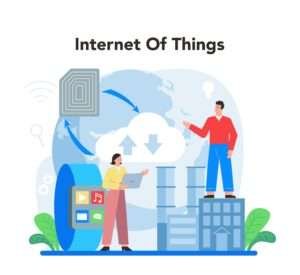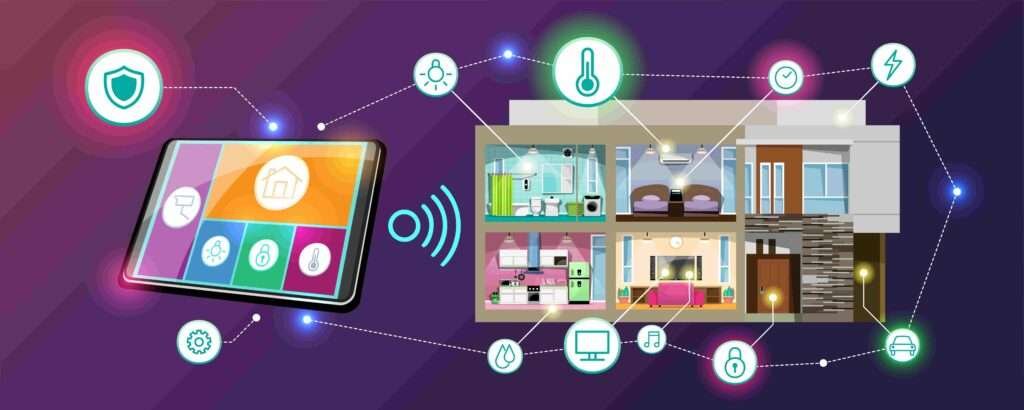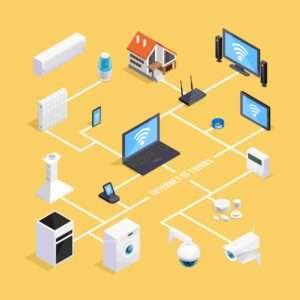Remote Updating IoT Devices Performance Enhancement
Introduction
In the ever-evolving landscape of technology, IoT devices have become integral to our daily lives. From smart thermostats to connected cars, these devices seamlessly communicate and share data, enhancing efficiency and convenience. However, ensuring these devices are up-to-date with the latest features and security patches is crucial. This article explores the significance of remote updates for IoT devices, shedding light on the challenges, solutions, and future trends in this dynamic field.

Understanding IoT Devices
Before delving into the world of remote updates, it’s essential to understand what IoT devices are and their prevalence in today’s tech-driven society. IoT, or the Internet of Things, refers to the interconnected network of devices that communicate with each other to perform specific tasks. Examples include smart home devices, wearable tech, and industrial sensors. The rapid growth and adoption of IoT technology underscore its transformative impact on various industries. features and security patches is crucial. This article explores the significance of remote updates for IoT devices, shedding light on the challenges, solutions, and future trends in this dynamic field.
The Need for Remote Updates
Traditionally, updating devices required physical intervention or user participation. However, in the realm of IoT, where devices are often scattered across diverse locations, this approach becomes impractical. Remote updates offer a solution to this challenge, ensuring that devices stay current with the latest software and security enhancements. The benefits of remote updates extend beyond convenience, addressing critical issues like system vulnerabilities and performance optimization.

Security Concerns and Solutions
One of the primary concerns associated with IoT devices is security. As these devices collect and transmit sensitive data, they become potential targets for cyber threats. Remote updates play a crucial role in fortifying device security by addressing vulnerabilities promptly. Implementing secure update protocols, such as encryption and authentication measures, becomes paramount in safeguarding IoT ecosystems.
Overcoming Connectivity Issues
In a world where not all devices have constant and reliable internet connectivity, addressing connectivity issues is pivotal for successful remote updates. Strategies to ensure updates are received and installed seamlessly, even in low-connectivity environments, contribute to the effectiveness of remote update processes.
Streamlining the Update Process
Efficiency is key when it comes to updating a myriad of IoT devices. Streamlining the update process involves employing tools and technologies that can automate and optimize the distribution of updates. From version control systems to over-the-air update mechanisms, adopting the right solutions ensures a hassle-free experience for both device manufacturers and end-users.

Case Studies
Real-world examples of successful remote updates highlight the tangible impact on device performance and user experience. These case studies provide insights into how businesses and individuals have benefited from adopting remote update strategies, emphasizing the importance of staying current in a fast-paced technological landscape.
Best Practices for IoT Device Updates
To ensure the effectiveness of remote updates, certain best practices must be followed. This includes regular and timely updates, user-friendly interfaces that simplify the update process, and transparent communication regarding the benefits of each update. Striking a balance between security and user convenience is crucial for widespread acceptance and compliance.
Future Trends in IoT Updates
As technology continues to advance, the future of IoT updates holds exciting possibilities. Evolving technologies, such as edge computing and AI-driven solutions, promise to optimize the update process further. Anticipated improvements in efficiency and effectiveness underscore the need for continuous innovation in IoT technology.
User Perspectives on Remote Updates
Understanding how users perceive remote updates is vital for the widespread acceptance of these processes. Survey results or anecdotes can provide valuable insights into user preferences regarding automatic updates versus user-controlled updates. Striking the right balance ensures that devices remain secure and up-to-date without compromising user autonomy.
Industry Standards and Regulations
In the dynamic landscape of IoT, adherence to industry standards and regulations is imperative. Meeting compliance requirements for IoT updates ensures that devices are not only technologically advanced but also adhere to security and privacy standards. This is crucial for building trust among users and stakeholders.
Common Challenges and Solutions
Identifying common challenges in IoT updates, such as compatibility issues and device diversity, is essential. This section explores strategies to overcome these challenges effectively, ensuring that the update process remains robust and inclusive.
The Role of Artificial Intelligence
AI-driven solutions play a pivotal role in optimizing IoT update processes. From predictive analytics to automated testing, integrating artificial intelligence enhances the efficiency and effectiveness of updates. This section delves into the various ways AI contributes to the evolution of IoT technology.
Evaluating Risks and Rewards
Balancing the potential risks associated with updates against the rewards is a critical aspect of IoT device management. Strategies for minimizing risks, such as thorough testing and gradual rollouts, are explored. Understanding the potential rewards, including enhanced security and improved functionality, reinforces the importance of staying proactive in the update process.
Conclusion
In conclusion, remote updates for IoT devices are not just a convenience but a necessity in our interconnected world. The challenges posed by diverse devices, security concerns, and connectivity issues are effectively addressed through well-implemented remote update strategies. As we look to the future, the continued evolution of IoT technology and the integration of innovative solutions, such as AI, promise. What are some specific examples of IoT devices that require remote updates?
Examples of IoT devices that require remote updates include smart home devices like thermostats, security cameras, and smart locks, as well as wearable technology like fitness trackers and smartwatches. Industrial sensors and other equipment may also require remote updates to ensure optimal performance and security.
What are some of the challenges associated with implementing remote updates for IoT devices?
Some of the challenges associated with implementing remote updates for IoT devices include compatibility issues, connectivity issues, security concerns, and device diversity. Ensuring that updates can be received and installed seamlessly, even in low-connectivity environments, is crucial for successful remote updates.
What are some of the best practices for ensuring successful remote updates for IoT devices?
Best practices for successful remote updates for IoT devices include:
- Regular and timely updates.
- User-friendly interfaces that simplify the update process.
- Transparent communication regarding the benefits of each update.
Implementing secure update protocols like encryption and authentication measures is also crucial for safeguarding IoT ecosystems. Striking a balance between security and user convenience is key for widespread acceptance and compliance.to enhance the update process further.
FAQS
How do I update my IoT device?
Typically, IoT devices can be updated through firmware updates provided by the device manufacturer. This may involve downloading and installing updates through a dedicated app or platform.
What is an update in IoT?
An update in IoT refers to the process of modifying or upgrading the firmware or software of an IoT device to enhance its functionality, fix bugs, improve security, or add new features.
What is device update for IoT hub?
Device updates for IoT hubs involve applying software or firmware updates to the devices connected to the IoT hub. This ensures that all devices within the IoT ecosystem are running the latest and most secure software.
How often should you update the firmware of an IoT device?
The frequency of firmware updates for IoT devices depends on various factors, but it’s generally recommended to update them regularly, especially for security reasons. Updates may be prompted by the device manufacturer or IoT platform, and critical security updates should be applied promptly.
What is IoT on my phone?
IoT on your phone refers to the integration of Internet of Things technology with your mobile device. This allows your phone to interact with and control IoT devices, such as smart home appliances, wearables, or other connected devices.
Why is it hard to update IoT devices?
Updating IoT devices can be challenging due to diverse hardware, software, and communication protocols used across different devices. Additionally, some devices may lack automated update mechanisms, making manual updates necessary. Security concerns, compatibility issues, and the sheer number of connected devices can also contribute to the complexity of updating IoT devices.
How often should IoT devices be updated?
Regular updates are recommended, with the frequency depending on the device type and criticality of updates.
Can users control when updates are installed on their devices?
Yes, many IoT devices offer user control options for updating, balancing security with user preferences.
Are there any security risks associated with remote updates?
While remote updates enhance security, there is a minimal risk of vulnerabilities during the update process. However, proper encryption and authentication measures mitigate these risks.
What happens if an IoT device fails to update remotely?
Manufacturers often implement fail-safe mechanisms. In the rare event of a failed update, devices typically revert to the previous version to prevent disruptions in functionality.
How do AI-driven solutions contribute to IoT updates?
AI contributes by predicting optimal update times, automating testing processes, and improving the overall efficiency of the update process.




1 Comment
10 Innovational Gadgets Set To Transform Your Life In 2024 · 14 February 2024 at 00:26
[…] not only enhances mobile internet but also paves the way for innovations like smart cities and the Internet of Things (IoT) […]